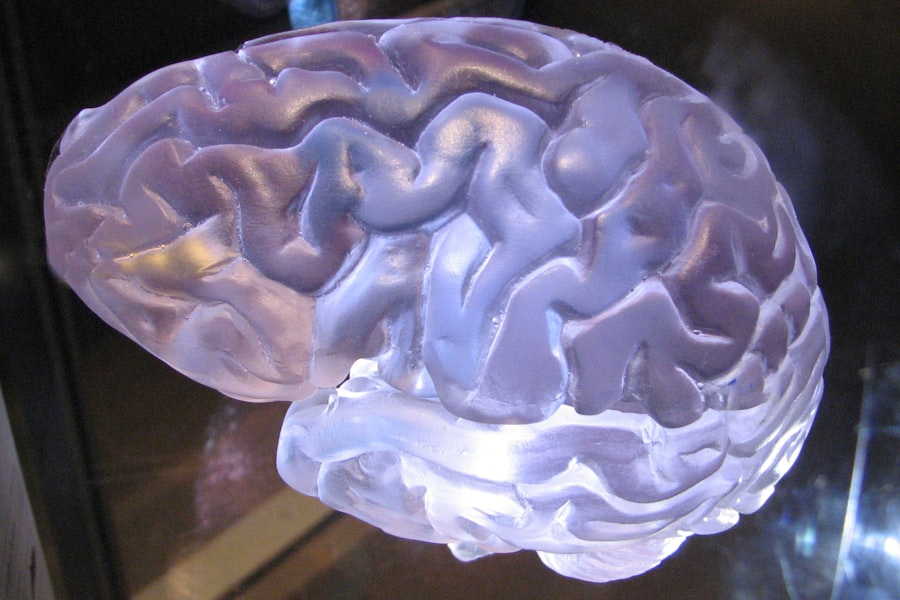The brain, a marvel of biological engineering, serves as the command center of your body. It orchestrates every thought, movement, and sensation, making it one of the most complex organs you possess. As you navigate through life, your brain processes an immense amount of information, allowing you to interact with the world around you.
Understanding the intricacies of this organ not only enhances your appreciation for its capabilities but also sheds light on how it influences your daily experiences. In recent years, advancements in neuroscience have unveiled fascinating insights into how the brain operates. From the way it encodes memories to how it regulates emotions, the brain’s functions are both intricate and essential.
As you delve deeper into the study of the brain, you will discover that its structure and function are interwoven in a way that supports your cognitive abilities and overall well-being. This exploration will take you through various aspects of brain science, revealing the profound impact it has on your life.
Key Takeaways
- The brain is the control center of the body and is responsible for processing information, controlling movement, and regulating bodily functions.
- The brain is made up of different regions, each with specific functions, and is connected by a network of neurons that communicate through neurotransmitters.
- Neurons are the basic building blocks of the brain and transmit information through electrical and chemical signals using neurotransmitters.
- The brain is capable of changing and adapting throughout life, known as neuroplasticity, which is important for learning, memory, and recovery from injury.
- Genetics play a significant role in brain function, but environmental factors also have a profound impact on brain health and development.
Structure and Function of the Brain
The brain is divided into several key regions, each with distinct functions that contribute to your overall cognitive experience. The cerebrum, the largest part of your brain, is responsible for higher-order functions such as reasoning, problem-solving, and decision-making. Within the cerebrum, the cerebral cortex plays a crucial role in processing sensory information and facilitating voluntary movements.
As you engage in activities that require concentration or creativity, it is this part of your brain that is actively at work. Beneath the cerebrum lies the cerebellum, which is essential for coordination and balance. This region helps you perform tasks that require fine motor skills, such as writing or playing a musical instrument.
Additionally, the brainstem connects the brain to the spinal cord and regulates vital functions such as breathing and heart rate. Understanding these structures allows you to appreciate how seamlessly your brain integrates various functions to support your daily activities.
Neurons and Neurotransmitters

At the core of brain function are neurons, the specialized cells responsible for transmitting information throughout your nervous system. Each neuron communicates with others through synapses, where neurotransmitters—chemical messengers—are released. These neurotransmitters play a pivotal role in regulating mood, cognition, and behavior.
For instance, dopamine is often associated with pleasure and reward, while serotonin contributes to feelings of well-being and happiness. As you learn about neurons and neurotransmitters, you will come to understand how they influence your thoughts and actions. The delicate balance of these chemicals can significantly impact your mental health; an imbalance may lead to conditions such as depression or anxiety.
By recognizing the importance of these cellular components, you can better appreciate how they shape your experiences and interactions with the world.
Brain Development and Plasticity
| Age | Brain Development Milestones |
|---|---|
| 0-6 months | Rapid growth of neurons and synapses |
| 1-2 years | Development of language and motor skills |
| 3-5 years | Refinement of cognitive abilities and social skills |
| Adolescence | Pruning of unused synapses and development of higher cognitive functions |
Your brain undergoes significant development from infancy through adulthood, a process that is influenced by both genetic factors and environmental experiences. During early childhood, your brain forms an astonishing number of connections—synapses—that lay the foundation for future learning and development. This period is critical; the experiences you have during these formative years can shape your cognitive abilities and emotional resilience.
Neuroplasticity is a remarkable feature of your brain that allows it to adapt and reorganize itself in response to new experiences or injuries. This ability means that even as you age, your brain can continue to form new connections and strengthen existing ones. Engaging in activities that challenge your cognitive abilities—such as learning a new language or playing a musical instrument—can enhance neuroplasticity and promote lifelong learning.
By understanding this dynamic nature of your brain, you can take proactive steps to foster its growth and adaptability.
The Role of Genetics in Brain Function
Genetics plays a significant role in shaping your brain’s structure and function. Your genetic makeup influences everything from the size of certain brain regions to the efficiency of neurotransmitter systems. While genetics provides a blueprint for your brain’s development, it interacts with environmental factors to determine how you think, feel, and behave.
This interplay between nature and nurture is crucial in understanding individual differences in cognitive abilities and personality traits. Research has shown that certain genetic variations can predispose individuals to specific mental health conditions or cognitive strengths. For example, variations in genes related to dopamine regulation may influence susceptibility to addiction or mood disorders.
By exploring the genetic underpinnings of brain function, you can gain insights into how inherited traits may affect your mental health and cognitive performance.
Brain Imaging Techniques

Advancements in technology have led to the development of various brain imaging techniques that allow researchers to visualize brain activity in real-time. Techniques such as functional magnetic resonance imaging (fMRI) and positron emission tomography (PET) provide valuable insights into how different regions of your brain respond during various tasks or emotional states. These imaging methods have revolutionized our understanding of brain function by enabling scientists to observe changes in blood flow and metabolic activity associated with cognitive processes.
As you explore these imaging techniques, you’ll discover their applications in both research and clinical settings. For instance, fMRI has been instrumental in identifying brain regions involved in memory formation or emotional regulation. In clinical practice, these imaging tools can aid in diagnosing neurological disorders or assessing treatment efficacy for mental health conditions.
By harnessing the power of these technologies, researchers continue to unravel the complexities of the human brain.
Brain Disorders and Diseases
Despite its remarkable capabilities, the brain is susceptible to various disorders and diseases that can significantly impact your quality of life. Conditions such as Alzheimer’s disease, Parkinson’s disease, and multiple sclerosis are just a few examples of neurological disorders that affect millions worldwide. These conditions often result from a combination of genetic predisposition and environmental factors, leading to progressive decline in cognitive or motor functions.
Understanding these disorders is crucial for developing effective treatments and interventions. Ongoing research aims to uncover the underlying mechanisms of these diseases, paving the way for potential therapies that could slow their progression or alleviate symptoms. By staying informed about brain disorders, you can better advocate for yourself or loved ones affected by these conditions while also supporting efforts toward research and awareness.
The Impact of Environment on Brain Health
Your environment plays a pivotal role in shaping your brain health throughout your life. Factors such as nutrition, physical activity, social interactions, and exposure to stress can all influence how your brain develops and functions. For instance, a balanced diet rich in omega-3 fatty acids has been linked to improved cognitive performance and reduced risk of neurodegenerative diseases.
Similarly, regular physical exercise promotes blood flow to the brain and encourages neurogenesis—the formation of new neurons. Moreover, social connections are vital for maintaining mental health; positive relationships can buffer against stress and enhance emotional well-being. Conversely, chronic stress or exposure to adverse environments can have detrimental effects on brain function, potentially leading to anxiety or depression.
By recognizing the impact of your surroundings on your brain health, you can make informed choices that promote a healthier lifestyle.
The Brain’s Role in Emotions and Behavior
Emotions are intricately tied to brain function; specific regions are responsible for processing feelings and regulating emotional responses. The amygdala, for example, plays a crucial role in fear processing and emotional memory formation. When faced with a stressful situation, this almond-shaped structure activates your fight-or-flight response, preparing you to react swiftly.
Your prefrontal cortex also contributes significantly to emotional regulation by helping you assess situations rationally and make decisions based on long-term consequences rather than immediate impulses. Understanding how these regions interact can provide valuable insights into why you feel certain emotions or behave in particular ways during different situations. By cultivating emotional awareness and developing coping strategies, you can enhance your emotional intelligence and improve your overall well-being.
Neuroplasticity and Brain Rehabilitation
Neuroplasticity not only allows for adaptation but also plays a crucial role in rehabilitation following injury or illness. When parts of your brain are damaged due to stroke or trauma, neuroplasticity enables other regions to compensate for lost functions by forming new connections. Rehabilitation programs often leverage this ability by incorporating targeted exercises designed to stimulate specific areas of the brain.
Engaging in activities that challenge your cognitive skills—such as puzzles or memory games—can promote recovery by encouraging neuroplastic changes. Additionally, therapies that involve physical movement or sensory stimulation can further enhance rehabilitation outcomes.
Future Directions in Brain Research
As neuroscience continues to evolve, exciting possibilities lie ahead for understanding the complexities of the human brain. Researchers are exploring innovative approaches such as optogenetics—using light to control neurons—and advanced machine learning algorithms that analyze vast amounts of neural data. These advancements hold promise for uncovering new insights into brain function and developing targeted therapies for neurological disorders.
Moreover, interdisciplinary collaborations between neuroscientists, psychologists, and engineers are paving the way for groundbreaking discoveries that could revolutionize mental health treatment and cognitive enhancement strategies. As you stay informed about these developments, consider how they may shape our understanding of the brain’s potential and its implications for future generations. In conclusion, delving into the intricacies of the human brain reveals a world filled with complexity and wonder.
As research continues to advance our knowledge of the brain’s capabilities, you stand at the forefront of a journey that promises to unlock new possibilities for enhancing cognitive function and improving quality of life.
In exploring the intricate workings of the human brain, it’s fascinating to delve into various resources that shed light on this complex organ. A related article that complements the insights from “Science of the Brain” can be found on the Hey Did You Know This website. This article provides additional perspectives and intriguing facts about neuroscience and cognitive functions. For more information, you can visit the article by clicking on this link.
WATCH THIS! Don’t Believe Everything You Think — Your Brain Is A Master Trickster!
FAQs
What is the science of the brain?
The science of the brain, also known as neuroscience, is the study of the nervous system, including the brain, spinal cord, and networks of sensory nerve cells called neurons.
What does neuroscience study?
Neuroscience studies the structure and function of the brain and nervous system, as well as how they influence behavior, thoughts, and emotions.
How does the brain work?
The brain works by sending and receiving electrical signals between neurons, which form complex networks that process information and control bodily functions.
What are some key areas of research in neuroscience?
Key areas of research in neuroscience include neuroplasticity, neurodegenerative diseases, brain development, cognitive neuroscience, and the neural basis of behavior and emotions.
Why is the science of the brain important?
Understanding the science of the brain is important for advancing medical treatments for neurological and psychiatric disorders, improving education and learning strategies, and gaining insights into human behavior and consciousness.
